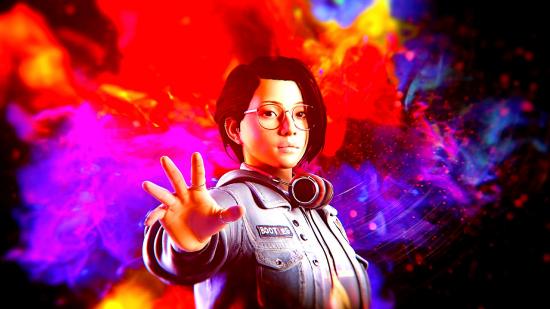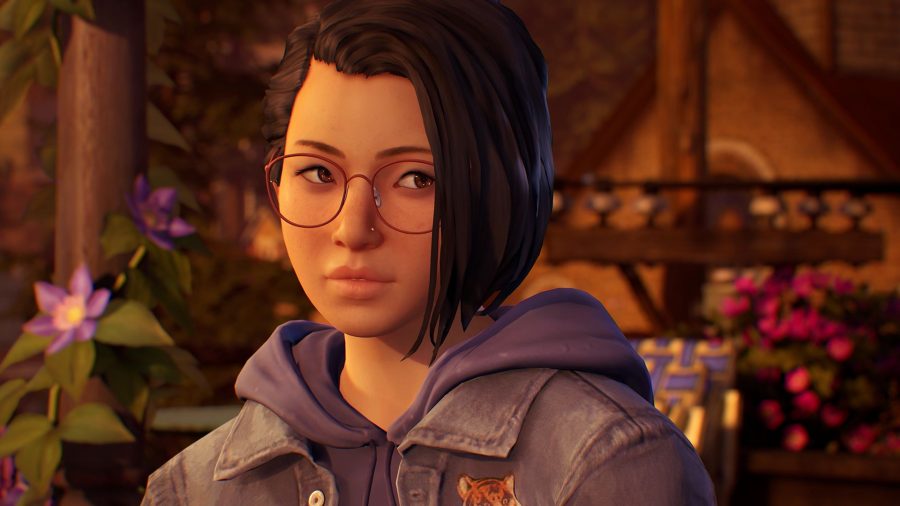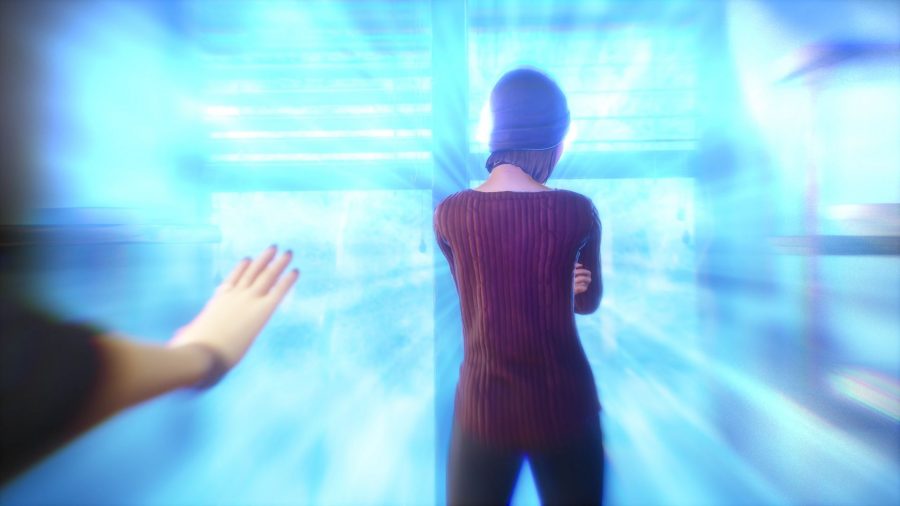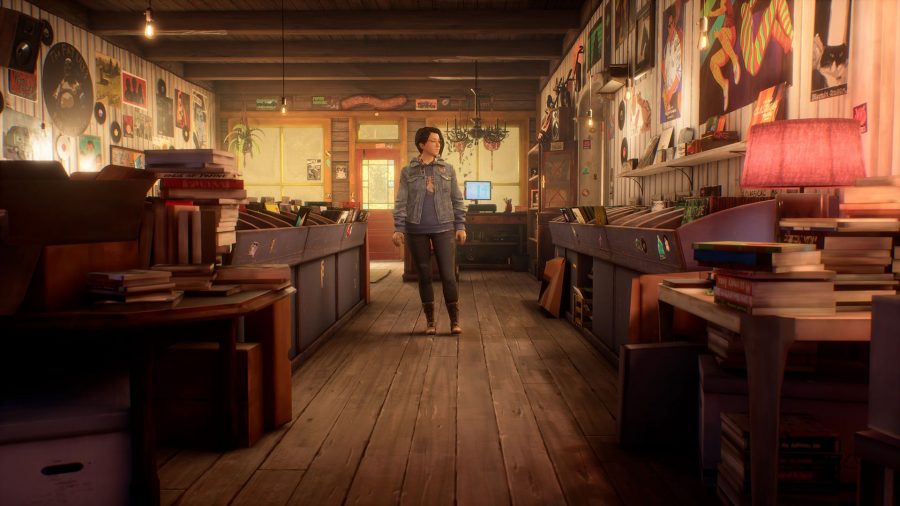Last month, Life is Strange: Before the Storm developer Deck Nine announced the next major release in the beloved narrative adventure game series, Life is Strange: True Colors. This time our hero is Alex Chen, a young woman gifted with a superpowered form of empathy, which lets her tap into other people’s emotions on a much deeper level, reading what they’re feeling based on colourful auras that surround them.
The story follows Alex’s return to a remote mountain town called Haven Springs after years away growing up in the foster care system. She sets out to reunite with her older brother Gabe, but he dies in mysterious circumstances, leading Alex to use her power to search for the truth.
True Colors marks a few firsts for the series. While the game is still episodic (with five in total), every episode will launch on the same day, so players have the option to binge the whole story in one sitting this time around. True Colors is also the first Life is Strange game to feature full performance motion capture, hopefully bringing more life to its script and characters.
We speak to senior staff writer Felice Kuan and Alex’s actor Erika Mori to find out more about True Colors’ protagonist, how the game elevates empathy to superpower status, and what full performance mocap brings to the series.
PCGamesN: What do you think are Alex’s defining attributes as True Colors’ protagonist?
Felice Kuan: We wanted a character for whom emotions and empathy would be a source of vulnerability at the beginning of the game, so that players could experience the process of Alex coming to value her abilities and perspectives, and then influence how she decides to use them. As with writing Before the Storm, our process has involved a lot of digging into our own personal perspectives and thinking about what experiences would be particularly valuable and impactful to play through first-hand.
Erika Mori: I had immense freedom during the creative process to bring Alex to life. The directors would often give me some background to set up a scene, but then would just let me play when the cameras started to roll. The entire journey of discovering Alex was collaborative and I was made to feel like a very welcome part of that process.
Life is Strange has always brought relatable, human experiences and paranormal twists together – how does True Colors carry the torch, and how important are Alex’s powers in telling her story?
EM: That duality of the human condition and the supernatural is part of the Life is Strange secret sauce. It’s brilliant that Alex’s power is basically a trait that most of us possess – empathy – but on steroids, because I think it allows the power itself to be relatable to players in a way that previous powers weren’t.
I think many of us can remember a time when we’ve helped a friend or loved one shoulder strong emotions, but Alex’s experience of this is dialled up to 11. It can overtake her if she isn’t careful, changing everything inside and around her.
FK: Alex is able to access the innermost parts of other people and each of the major power usages is unique. This gave us a chance to come up with new aesthetics for each one – leaning into the paranormal and surreal, and drawing on the talents of our sound designers, environment artists, and cinematic artists – all while remaining grounded in real human experience.
Do you think these superpowers are an effective method of storytelling?
FK: Very much so. That core Life is Strange concept of a young person using paranormal powers to face completely mundane and real-world problems allows players to come to these scenarios with a fresh, open mind.
EM: I think this method of storytelling will draw players into the narrative even more deeply because they already have a taste of Alex’s power in their own lives.
How important are stories like this in the strange times we find ourselves in at the moment?
FK: Speaking personally, I have reached for games throughout the pandemic to help bridge the loss of a daily connection with other people. The continuing growth of the narrative adventure game genre, as well as the increased importance of narrative in other video game genres, and the vastly expanding definition of ‘gamer’ is incredibly inspiring – it brings me a lot of joy.
EM: What narrative adventure games, and Life is Strange in particular, do so well is that they give people the chance to actually step into the shoes of someone else. Because of the medium, players make choices and essentially live as this other character, which is behaviour that inevitably creates a closeness and compassion for the lived experience of someone different than themselves. With True Colors we take that idea even further, because the power of empathy is the engine driving the narrative forward. It insists that the player confronts and engages in the emotional truths of others.
How does Alex’s superpower tie into her character? How is she able to use this as a force for good?
FK: As Alex wanders the town, players will get to experience the full gamut of what this empathy power means for her on a daily basis. There was a lot of thought and discussion in the writers’ room about whether this heightened empathy would make a person kinder or more bitter overall, because there are so many scenarios that could drive someone towards one or the other. I’m sure it could differ for another character, but as Alex came into focus through our writing and through working with Erika, what emerged is that Alex is just a freaking wonderful, good person.
EM: Alex has lived with the psychic power of empathy her entire life and its volatility has made life difficult – but she still remains hopeful for her future. Gabe’s death serves as the inciting incident for her to confront this part of herself that she despises and fears, hopefully using it to help solve the mystery of his death.
Alex can become overwhelmed when she’s exposed to strong emotions. How do you demonstrate this in-game?
EM: At the beginning of the game, Alex’s power has caused her to move herself to the outskirts of communities and relationships. Getting close to someone comes with the risk of her losing control of herself. The beauty of Alex’s journey is how she grows to accept who she is, including her power, and how she chooses to navigate her life moving forward despite the burdens of her past.
FK: For the writing, it required a lot of care and nuance, because Alex doesn’t lose her own identity in these moments. She’s still her, reacting to the other person’s emotion while simultaneously feeling it intensely herself. One of the most interesting components for us was the lingering after-effects… when the moment dies down and Alex is free of the supernatural grip, she’s nonetheless changed because the power brought out her own feelings of anger, fear, or grief about things in her own life, even if she’s tried to bury those emotions in the past.
How did you approach some of the more sensitive aspects of Alex’s character, such as growing up in foster care and losing a sibling?
FK: We had a wonderful foster care consultant and did continuous research throughout development. It was important for us to convey how intertwined the hardships of Alex’s past history were with her power and her background.
We didn’t want foster care being a generic ‘bad past’ to launch the story, and that meant being specific with details and continuing the threads of Alex’s past into her present-day story.
EM: We did a lot of research and homework on the experience of being in the foster care system that informed the writing and performance. From a performance perspective, I’ve experienced loss and grief, rejection and fear, and disappointment – all the strong emotions that Alex goes through, I’ve been there. So I would locate where the sensation for each of those emotions was located in my body and I would access that during those particular scenes. It allowed me the freedom to stay in the scene, accessing that emotion in a genuine way without deviating from the script or Alex’s context.
It also made the process of repeatedly going to those deeply emotional places safe, because I wasn’t retraumatising myself by reliving the events in my personal life that had made me feel those emotions in the first place. Being able to draw on my own personal failures, triumphs, and joys in a healthy way helped provide shape and nuance to the Alex you meet in the game.
Alex Chen is the first protagonist of Asian-American heritage in the series. How did you approach the writing and performance to reflect her background and experiences authentically?
EM: This might have been the easiest part for me since I’m an Asian-American woman myself! But honestly, Alex’s ethnicity is just one of the many wonderful things that makes her who she is. She’s also a sister, and a daughter, and a friend, and a musician, and the new girl, and… it’s all of these pieces together that make her the fully realised, complex person that players will meet in the game.
I think it’s wonderful that Asian-Americans will be able to see themselves in her, but I also know that players who don’t share her ethnic background will still find things about her that they can relate and connect to.
FK: I’ve experienced first-hand how deeply and fundamentally validating it can be to see oneself represented in media. So it was quite gratifying and emotional to be able to tell Alex’s story and to include details of her and Gabe’s Chinese-Vietnamese heritage. Deck Nine and Square Enix share this passion for representation and often sought out input from myself and other Asian-American developers at the studio to enhance our depiction of Alex and Gabe’s background across the creative spectrum, from dialogue and art assets to the nuances of casting.
What kind of impact has full performance mocap had on bringing Alex’s character to life?
FK: It was incredible. We were very lucky to have Erika, because she immediately showed us how powerful – and sometimes hysterical – a simple facial expression or gesture can be with this new tech. This allowed us to pull back our writing and deliver scenes much more akin to a movie or play in their velocity and nuance.
EM: Motion capture was an absolute ball because you really get to rely on the power of your imagination. Plus, being able to play around with physicality for Alex, seeing what worked and what didn’t as we fleshed out her character, was really interesting and rewarding, especially since I have an extensive background in dance.
I think that having the ability to do full performance capture, meaning we captured body, face, and voice performance all at the same time, was instrumental in successfully creating this game about empathy. It allowed us to get really high-fidelity facial expressions that were organically connected to whatever was going on with my voice and body in a particular scene. We didn’t have to break up the three components of the physical performance, and so the performance as a whole comes across in a much more authentic way.
Do you think it’s important to have diverse lead characters in media?
EM: Diversity in media and art is so important; I remember not seeing many characters who looked like me in the entertainment I consumed growing up. I’m thrilled to be part of a series that is so committed to providing a diverse lens in the stories being told and who gets to tell them.
FK: I don’t think anything else would be possible for a Life is Strange protagonist, given the series’ exceptional focus on real, nuanced, sympathetic main characters who are trying their best and have much to learn. It’s a wonderful ethos to be creating in.
What are your favourite things about Alex?
EM: Her sweet jean jacket! But in all honesty, my favourite part of Alex is her hope and her boundless capacity to love.
FK: When she’s not being tossed around by others’ violent emotions, Alex is so chill, wry, and down-to-earth. She’s just awesome, I really love her.
We’ll get to jump into Alex’s shoes and experience life in Haven Springs for ourselves when the Life is Strange: True Colors release date rolls around on September 10 – in the meantime you can pre-order True Colors from Humble here. Check out our roundup of the best story games on PC if you can’t wait until then.





